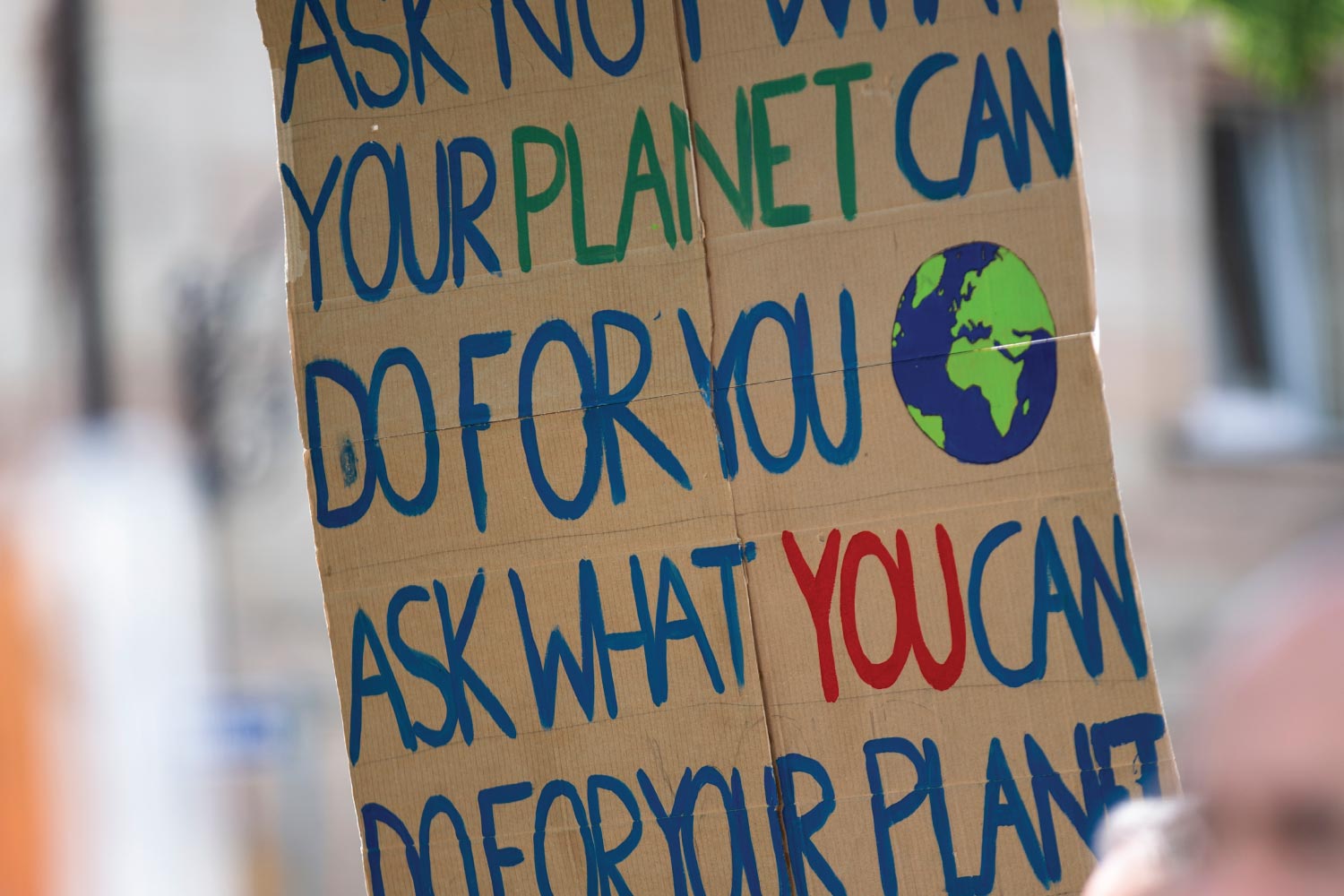05
Nov
Climate Change Basics
0 Comment
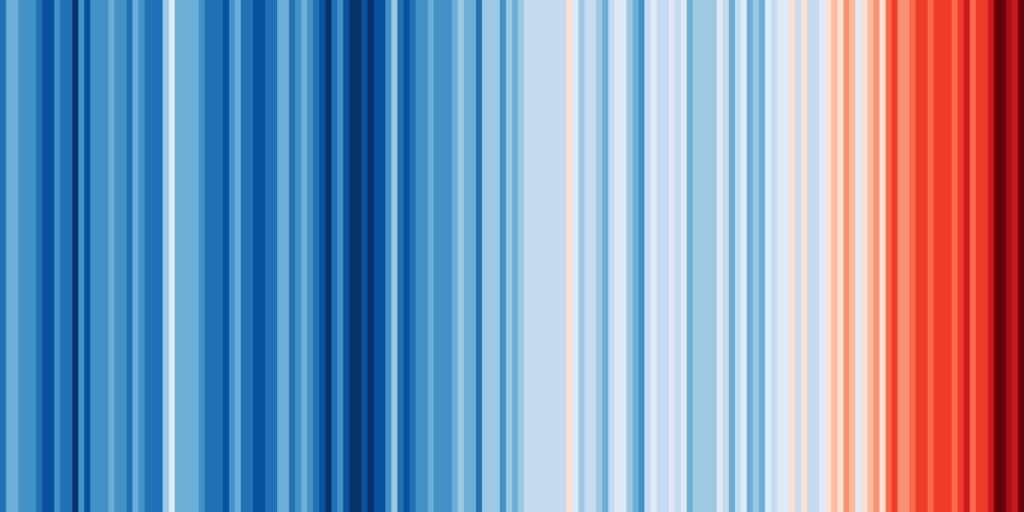
Warming Stripes for the Globe from 1850-2019, Ed Hawkins – WMO
Upon first glance, this colorful image doesn’t seem to be more than an ordinary pattern; it’s attractive enough you could see it being printed on a pillow, or maybe a scarf.
Quite to the contrary, it’s actually a striking visualization of climate change, created by renowned climate scientist – and new artist – Ed Hawkins. Traveling left to right, each vertical line represents the annual average global temperature over the last 170 years. The transition from blue to red reveals an alarming truth: our planet is warming, and fast. In this article, we’re going to discuss why, what this means, and most importantly, what you can do about it.
Climate Basics
Climate vs. Weather
To understand the dynamics of climate change, it is important to make a distinction between weather and climate. While weather describes short-term changes in the atmosphere (rain clouds, cold fronts, clear skies), climate refers to weather patterns in a particular place, observed over decades. These differences explain why more extreme weather that you wouldn’t normally associate with global warming – like increased snowstorms – could still be attributed to climate change. You can read more about the difference between climate and weather here.
The Science Behind Climate Change
From natural records found in ice cores, tree rings, and fossilized shells at the bottom of the ocean, scientists know there is a close relationship between greenhouse gases and Earth’s climate, or average temperature and weather patterns.
Climate change is a consequence of the excess addition of heat-trapping greenhouse gases into the Earth’s atmosphere. Greenhouse gases resulting from human activity, commonly called ‘emissions’, intensify a natural process called the Greenhouse Effect. GHGs trap the sun’s energy within Earth’s atmosphere, instead of allowing it to be reflected back out into space. The higher the concentration of GHGs, the warmer Earth will be.
A simplified animation of the greenhouse effect. Source: Climate.Nasa.Gov
"In 2019, we reached 415 ppm. This is more carbon than has existed on earth for millions of years; the last time this occurred, pre-humans weren’t even using tools. It becomes all the more incredible, when we realize these changes have occurred in mere hundreds of years."
Global Warming & Climate Change
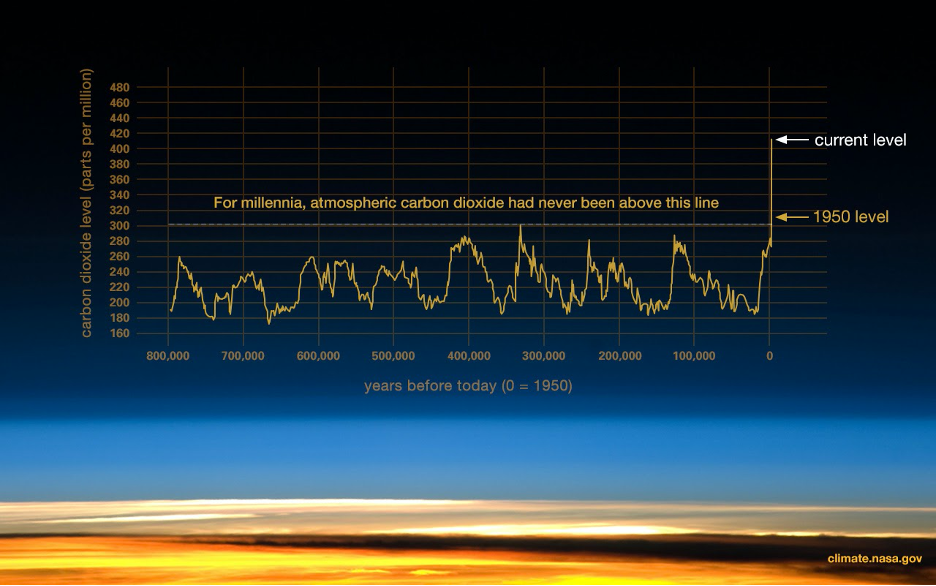
Data from ice core samples shows historical fluctuations in atmospheric CO2, with a rapid spike since the Industrial Revolution – NASA
Global warming contributes to climate change. Global warming refers to long-term increases in Earth’s average temperature since the early 20th century as a result of industrialization. Since the Industrial Revolution, humans have been burning large quantities of fossil fuels (e.g. coal, petroleum, natural gas). The combustion of fossil fuels is directly tied to global warming because it releases GHGs into our atmosphere. The dual processes of industrialization and globalization have led to dramatic increases in the emission of GHGs as compared to pre-industrial levels, primarily in the form of CO2.
CO2 has caused the majority of Earth’s warming due to it being the most numerous and the longest lasting of all GHGs. Over the last 270 years, atmospheric concentrations of CO2 have more than doubled – CO2 levels are the highest they have ever been in the history of humanity, and they are accelerating.
On the contrary, climate change is long-term changes in global average weather patterns. Although climate change can result from both natural and human causes, among scientists, there is a widespread consensus that the climate change observed today is human-caused and cannot be attributed to a regular shift in Earth’s temperature.
For years, geologist and academic James Lawrence Powell has been tracking scientists’ views on climate change. In 2019, 100% of 21,000 papers published agreed: climate change is a direct result of human activity.
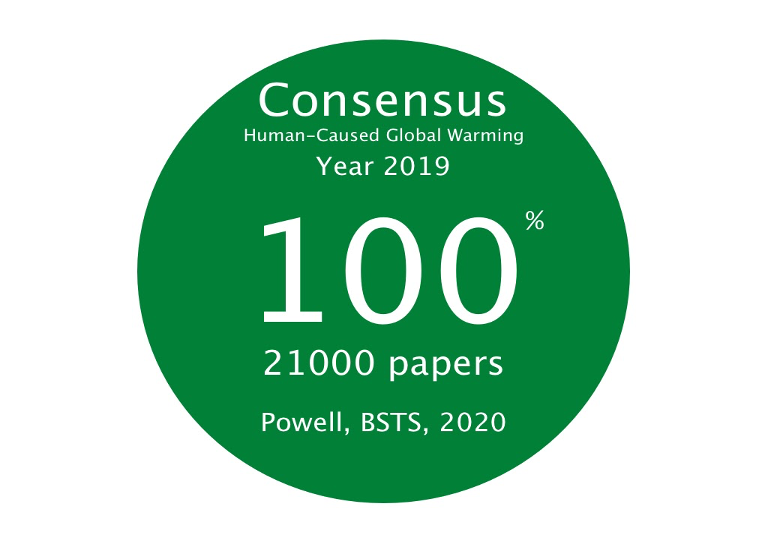
Climate Fluctuations
It is natural for earth’s climate to fluctuate over time. The Earth’s carbon dioxide rises and falls over intervals of approximately 100, 000 years with about 80-90,000 years of ice age and 10-20,000 years of a warm period. Scientists have found strong geological evidence for these changes, like in the trapped gases present in ancient polar ice cores, which have allowed them to construct a detailed record of Earth’s atmospheric composition, something that correlates with climate.
The difference between past natural climate cycles, and what we are experiencing now, is that increasing temperatures are primarily attributed to the large increase in GHGs as a result of industrial activities. Furthermore, for millennia, natural climate cycling has been very slow, and the level of atmospheric carbon dioxide has never surpassed 300ppm (parts-per-million) – until 1950.
In 2019, we reached 415 ppm. This is more carbon than has existed on earth for millions of years; the last time this occurred, pre-humans weren’t even using tools. It becomes all the more incredible, when we realize these changes have occurred in mere hundreds of years.
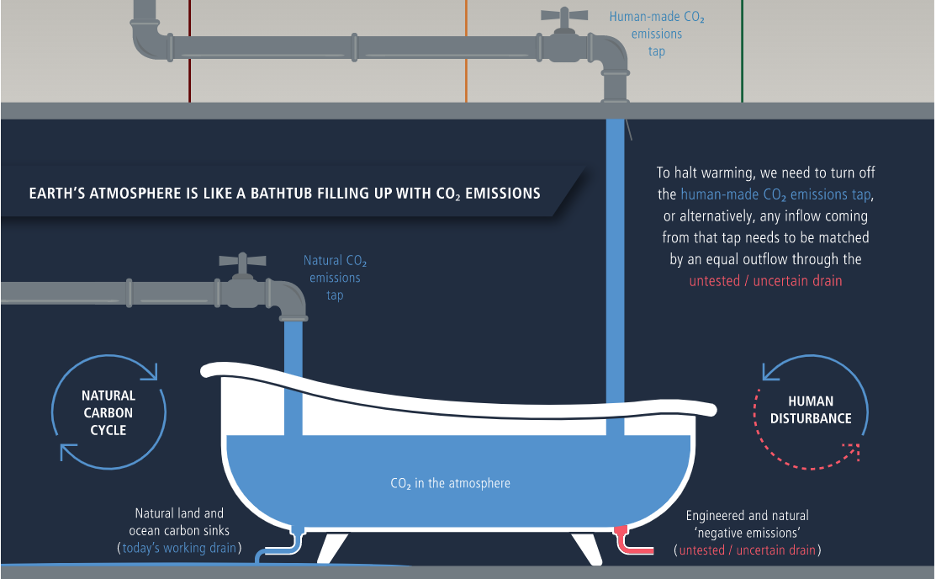
Can We Already See the Effects of Climate Change?
The short answer is yes. We can already see the effects of climate change on our environment. A report by the United Nations’ Intergovernmental Panel on Climate Change, one of the most reliable international sources on climate change, estimates that human activity has already caused 1° of global warming since the start of the Industrial Revolution in 1750.
ALREADY WE ARE SEEING THE EFFECTS OF CLIMATE CHANGE IN:
• Biodiversity loss and varying levels of ecosystem collapse: 60% drop in all vertebrate populations in 50 years (1970-2014)
• Melting polar ice: increased by 500% since the 1990s
• More extreme weather (storms, wildfires, droughts, famines) – map
• Ocean acidification: (coral reefs bleaching)
• Sea level rise: 2.3 inches per year
Depending on where you are in the world, climate change will manifest itself in different ways. Developing countries, especially those near the equator, are the most severely impacted by climate change, but the least able to adapt to it. You can read more about this issue here.
What Could Climate Change Look Like?
Climate change will continue to accelerate unless the heat trapping greenhouse gases that human activity has propelled into the atmosphere and ocean in vast quantities are reduced. The severity of climate change will depend on how successful we are – collectively, as humans – in reducing our emissions to slow the warming effects of greenhouse gases and protecting the biodiversity and ecosystems which sustain all aspects of our lives.
Climate Scenarios, Emissions Reduction Targets, and Policy Goals
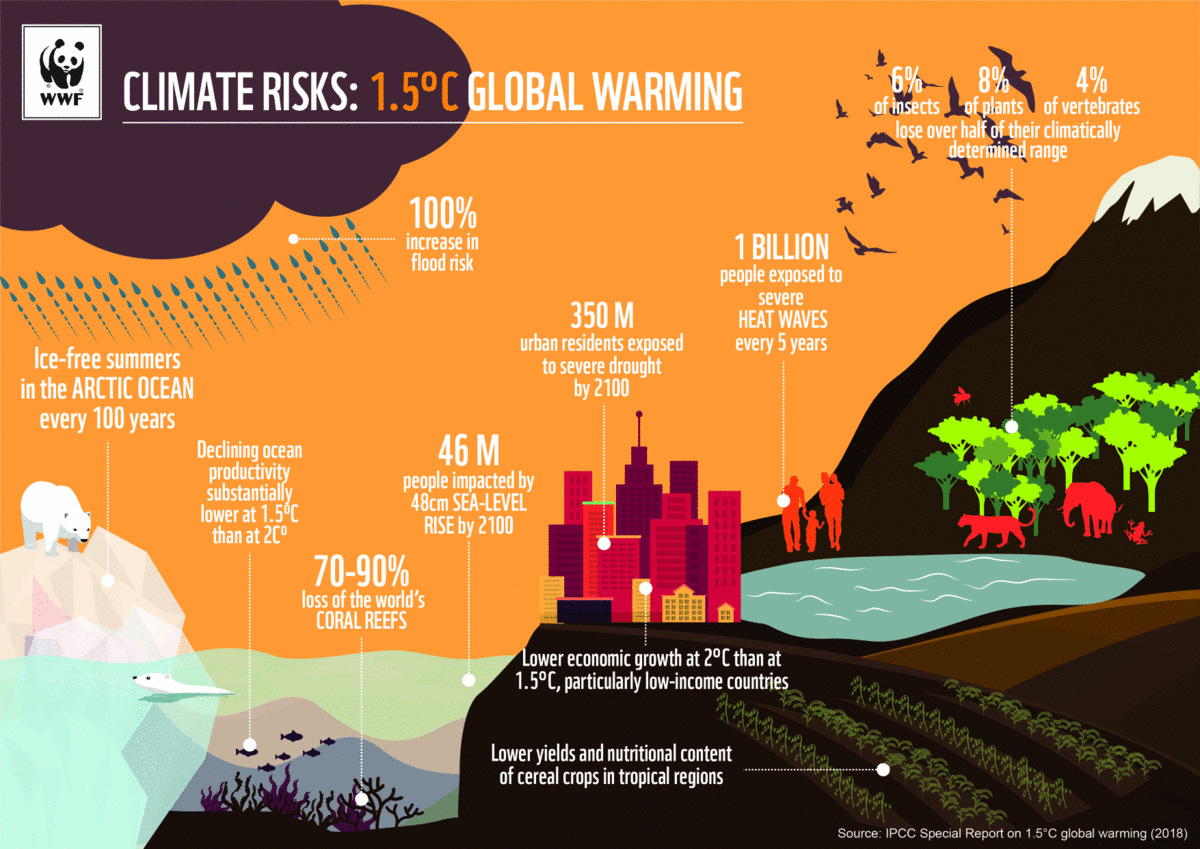
How much of a difference will half-a-degree really make? – WWF
It is useful to represent climate change in scenarios. What climate change will look like in the future is largely dependent on how effective we are at changing the way we live. By using ‘warming-scenarios’ researchers, planners, policy-makers, and citizens can better understand the challenge ahead. This WWF comparison illustrates the big difference between seemingly close global warming scenarios. While previously ambiguous, scientists are now certain global warming needs to be curtailed at 1.5 not 2℃. In the case of global average temperature, minute changes have dramatic impact.
Climate Change in Ridgewood

Warming Stripes for New Jersey, from 1895-2019, Ed Hawkins – Show Your Stripes
You’ll notice these “climate stripes” are slightly different. That’s because they’re ours. Like the rest of the world, New Jersey is experiencing noticeable changes to its climate. We can see from the image that over the past century, New Jersey is significantly hotter than it used to be, and temperatures are continuing to rise. Rising temperatures and sea levels are some of New Jersey’s most pressing environmental concerns. Extreme weather events, like Hurricane Sandy are expected to become more common in the near future. New York City, a workplace for many, is also at high risk of flooding, with a vulnerability assessment by Climate Central noting that a collapse of the Battery has the potential to flood the New York subway system by over 50%.
Ridgewood too, is becoming increasingly susceptible to flooding from sea level rise and extreme weather. Within the next 30 years, the number of properties considered to be vulnerable to flooding is expected to increase by 2.7-14 %. Climate change is something that affects us all. So how can we address these issues, in our local community of Ridgewood and beyond?
How Can You Make A Difference?
One way to make a difference is to change your habits or make choices that reduce you and your family’s carbon footprint, which you can calculate online. Your carbon footprint is the total amount of GHGs that result from your activities.
When calculating our carbon footprint, we must not only consider what we buy, but also the embodied GHG footprintassociated with their production and transportation. For example, an eco-friendly dish brush, that we buy online and is shipped from China, will have a far greater embodied GHG footprint than the exact same product sourced locally. This is because international shipping requires extra energy consumption.
Below are some day-to-day lifestyle changes that can help you and your family reduce impact on the environment.
LIFESTYLE CHANGES WITH THE GREATEST IMPACT:
• Reduce air travel
• Reduce meat consumption – especially ruminants (lamb, beef)
• Switch to renewable energy
• Consider electric vehicles or hybrids
• Reduce single-use items (plastic wrap, packaging)
• Buy fewer items with short lifespans (fast fashion, poorly-built electronics)
• Reduce food waste
OTHER THINGS YOU CAN DO:
• Buy local
• Buy organic
• Avoid greenwashing (to be covered in a later article)
• Share or rent rarely used items (e.g. tools, camping gear)
Your actions make a difference. Help us to realize a Sustainable Ridgewood.

Rebecca Sokolov
Rebecca has an undergraduate degree in Human Geography (environmental studies) from the University of British Columbia. Her work in sustainability has included gathering waste-insights and assisting in the development of a local council’s Climate Action Plan.
Share Post:
